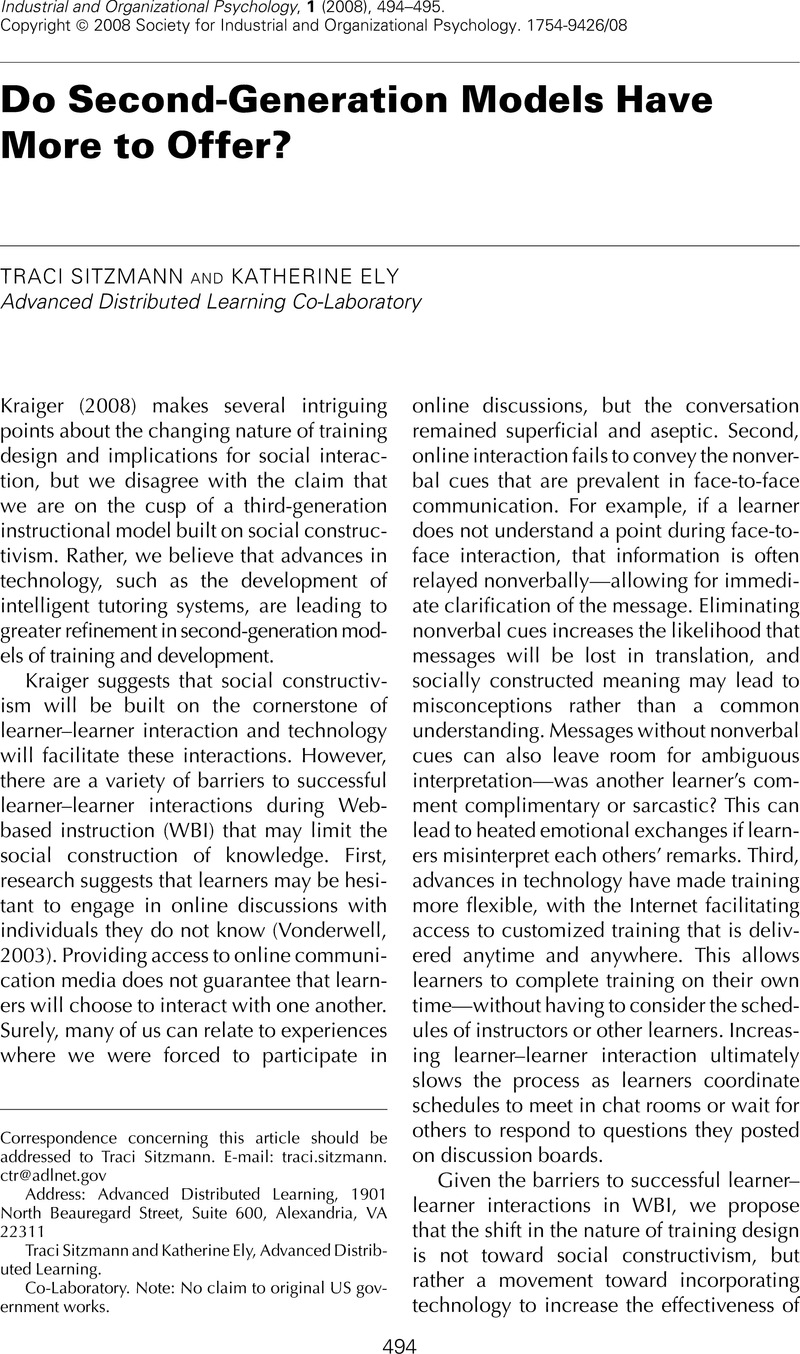Crossref Citations
This article has been cited by the following publications. This list is generated based on data provided by Crossref.
Kraiger, Kurt
2008.
Third-Generation Instructional Models: More About Guiding Development and Design Than Selecting Training Methods.
Industrial and Organizational Psychology,
Vol. 1,
Issue. 4,
p.
501.
Noe, Raymond A.
Tews, Michael J.
and
McConnell Dachner, Alison
2010.
Learner Engagement:A New Perspective for Enhancing Our Understanding of Learner Motivation and Workplace Learning.
Academy of Management Annals,
Vol. 4,
Issue. 1,
p.
279.
Granger, Benjamin P.
and
Levine, Edward L.
2010.
The perplexing role of learner control in e‐learning: will learning and transfer benefit or suffer?.
International Journal of Training and Development,
Vol. 14,
Issue. 3,
p.
180.
Noe, Raymond A.
Tews, Michael J.
and
McConnell Dachner, Alison
2010.
Learner Engagement:A New Perspective for Enhancing Our Understanding of Learner Motivation and Workplace Learning.
Academy of Management Annals,
Vol. 4,
Issue. 1,
p.
279.
SITZMANN, TRACI
2011.
A META‐ANALYTIC EXAMINATION OF THE INSTRUCTIONAL EFFECTIVENESS OF COMPUTER‐BASED SIMULATION GAMES.
Personnel Psychology,
Vol. 64,
Issue. 2,
p.
489.
Kraiger, Kurt
and
Culbertson, Satoris S.
2012.
Handbook of Psychology, Second Edition.





